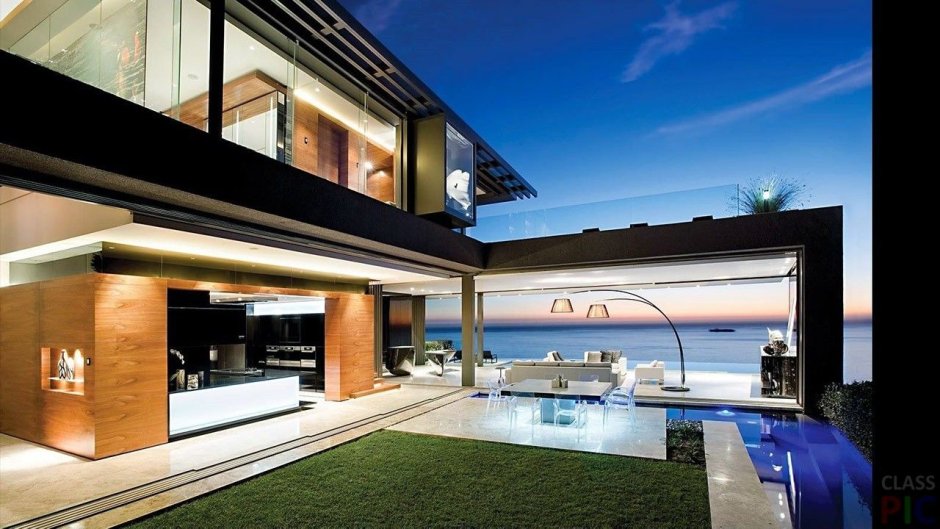Home design, an ever-evolving art, is on the cusp of a revolutionary transformation. The future promises a departure from traditional norms, ushering in an era where innovation, sustainability, and technological integration redefine the very essence of our living spaces.

Symbiosis of Nature and Architecture
One of the revolutionary concepts shaping the future of home design is the symbiosis of nature and architecture. Uncommon terminology like “biophilic design” and “living walls” denotes a shift towards incorporating nature seamlessly into our homes. Imagine walls adorned with flourishing greenery, not just as decor but as integral elements enhancing air quality and well-being.
This paradigm envisions homes not as separate entities but as extensions of the natural world, fostering harmony between the built environment and the ecosystems that surround them.
Technological Integration: Smart Homes Redefined
The future of home design is intricately entwined with technological integration, marking the rise of smart homes redefined. Terms like “ambient intelligence” and “intuitive automation” underscore a landscape where homes anticipate and respond to residents’ needs without explicit commands.
Imagine a home that adjusts lighting, temperature, and security based on occupants’ preferences and behaviors, creating an environment that seamlessly aligns with our lifestyles.
Adaptable Spaces for Multifunctional Living
Breaking away from conventional room structures, the future envisions adaptable spaces that cater to multifunctional living. Uncommon terminology like “transformative architecture” and “flexible zoning” captures the essence of homes that morph to accommodate diverse activities.
Picture a living room that effortlessly transforms into a home office, a fitness studio, or an entertainment hub, showcasing the versatility of spaces in response to the dynamic needs of modern living.
Eco-conscious Design: Sustainability as a Pillar
The future of home design is intrinsically linked to eco-consciousness, with sustainability emerging as a foundational pillar. Terms like “passive design” and “zero-net energy homes” signify an era where homes are not just energy-efficient but contribute positively to the environment.
Visualize homes designed with materials that minimize ecological impact, harness renewable energy sources, and employ water-saving technologies, embodying a commitment to a greener, more sustainable future.
Artificial Intelligence in Design Decision-Making
The integration of artificial intelligence (AI) is poised to revolutionize design decision-making. Uncommon terms like “generative design” and “algorithmic architecture” reflect a future where AI algorithms assist architects and designers in creating innovative, efficient, and aesthetically pleasing spaces.
Envision a collaborative process where AI analyzes vast datasets, considers user preferences, and proposes design solutions, offering a synergy between human creativity and computational prowess.
Beyond Aesthetics: Emotional Design
The future of home design transcends mere aesthetics, delving into the realm of emotional design. Terms like “emotive architecture” and “sensorial environments” signify a shift towards spaces that evoke specific feelings and responses.
Imagine homes that adapt color schemes, lighting, and textures based on occupants’ moods, creating environments that enhance well-being and emotional harmony.
Integration of Augmented Reality (AR) in Home Planning
The marriage of augmented reality (AR) with home planning is set to redefine how we envision and customize our living spaces. Uncommon terminology like “AR-powered visualization” and “interactive spatial design”. Illustrates a future where individuals can virtually experience and modify their homes before construction begins.
Picture homeowners using AR applications to virtually place furniture, experiment with color schemes, and visualize architectural modifications. Offering a level of engagement and precision previously unattainable.
Resilient Design: Adapting to Changing Realities
The future of home design embraces resilient design principles, acknowledging the need to adapt to changing realities. Terms like “climate-responsive architecture” and “crisis-ready homes” signify a shift towards homes that can withstand environmental challenges and unforeseen circumstances.
Visualize homes equipped with resilient materials, renewable energy sources. And adaptable structures that ensure durability and functionality in the face of evolving conditions.
Conclusion: A Tapestry of Innovation
As we explore the future of home design. It becomes evident that we are standing at the threshold of a new era. With uncommon terminology echoing through the corridors of innovation. Homes are poise to become not just spaces we inhabit but dynamic. Responsive environments that enhance our lives in unprecedented ways.
For further insights into the future of home design and the evolving landscape of architecture, explore ArchDaily.
© 2024 Design Horizons. All rights reserved.